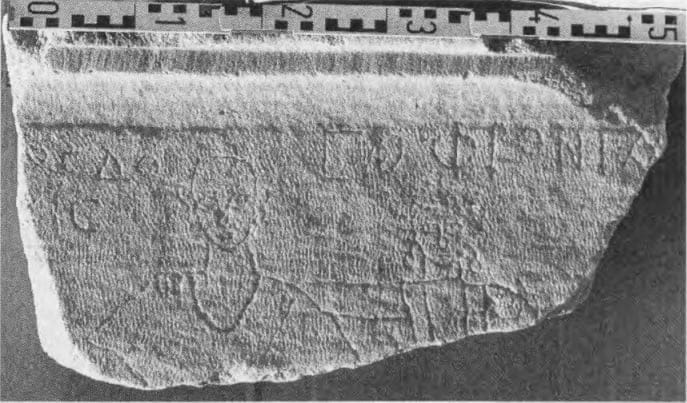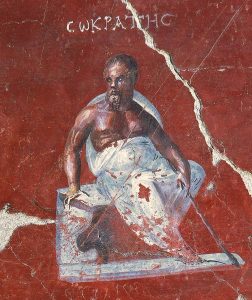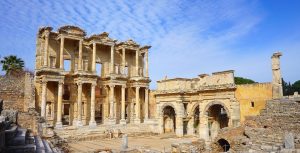Theaters are socialization centers of the ancient world. Theater is one of the most important places where Ephesians can relax and socialize after their daily lives. So much so that the most important stories are written, the decisions are taken, the world of gods and heroes is watched with interest and curiosity, and the theater contains elements that expand the world and perspectives of people.
Ephesus theater actors and authors Contents
About Ephesus Theater
The current state of the Ephesus Ancient Theater was built in the Hellenistic period, it is the largest open-air theater of the period with 65 rows and a seating capacity of 25,000 people. Ephesus theater has 3 floors in total. Each floor was added in different periods in parallel with the wealth and magnificence of the city.

Emperor Nero built the 2nd floor of this theater in the 1st century by decorating it with sculptures, carvings and various artistic structures. II. In the century, Septimius Severus ensured the construction of the 3rd floor of the theatre.
First of all, we do not have extensive information about the playwrights and actors in the Ephesus theater. However, according to what we learned from archaeological sources, the most staged plays in that period were comedy, mime (pantomime) and acrobats. I regret that I still have not come across clear information with Tragedya.
You will read the most extensive information about the playwrights of the Ephesus Theater and the actors of the Ephesus theater in this post. In addition, we still do not have any information about the inscriptions and we are not given any information on this subject.
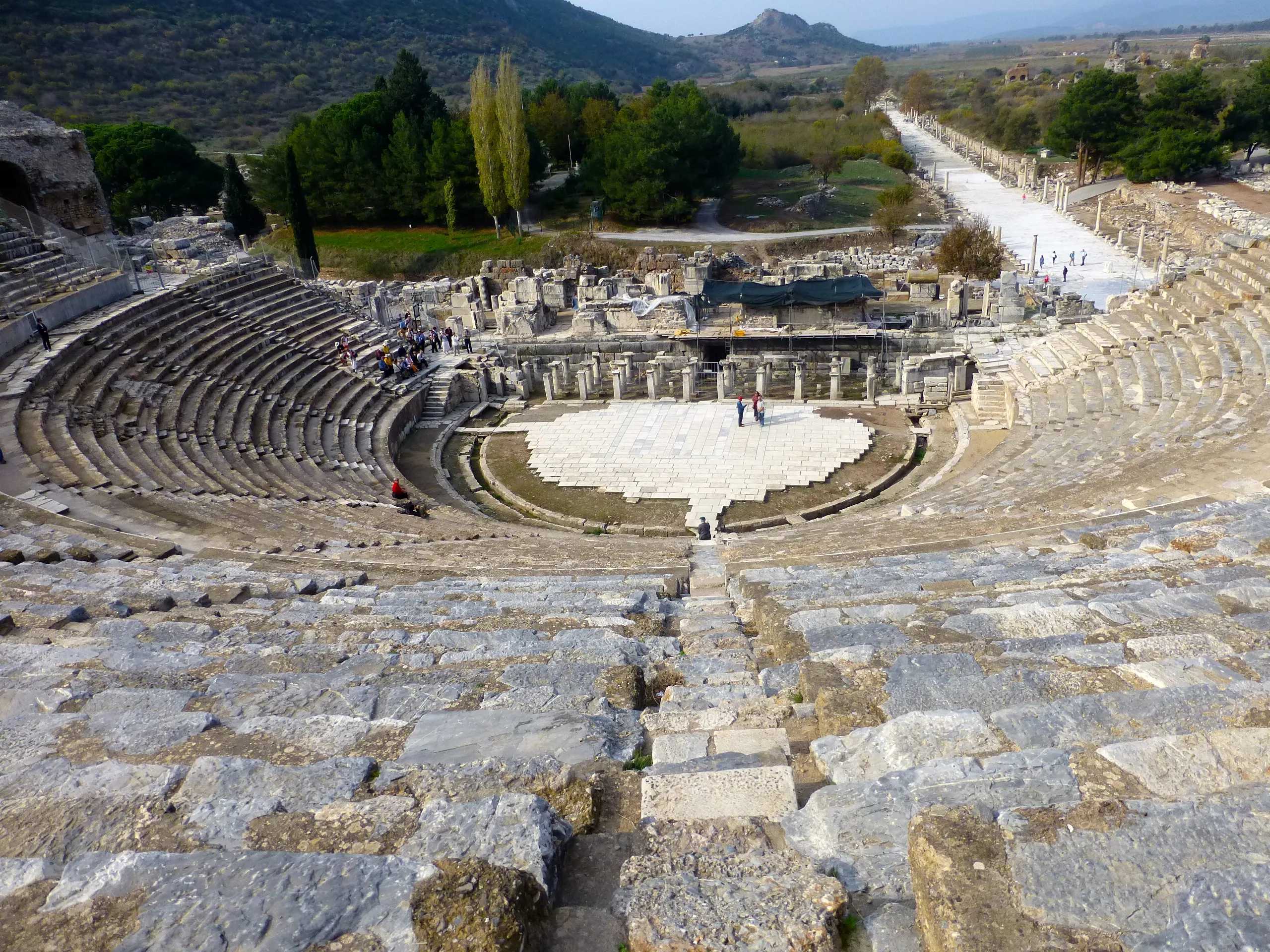
For example, although graffiti from Aphrodisias were collected and published, those unearthed in Ephesus a century ago have been largely ignored until recently. Some of the accompanying texts were eventually published, but the entire file was never put together and presented in full. Therefore, I find it useful to share the information I can find with you here, to update the information, to collect and publish it here.
A.D. mid 2nd century, it can be associated with the restoration work done in the theater by Proconsul Messalinus, who came after the Asian proconsul Aelius Claudius Dulcitius in the middle of the 2nd century. Messalinus is unknown from other sources; but in Ephesus he was honored with a third inscription on a pedestal on one of the city’s main streets. Unfortunately, we cannot find any other information about Messalinus. But we can definitely say that it was Proconsul Messalinus who made the Ephesus theater the last and most powerful you have seen now.
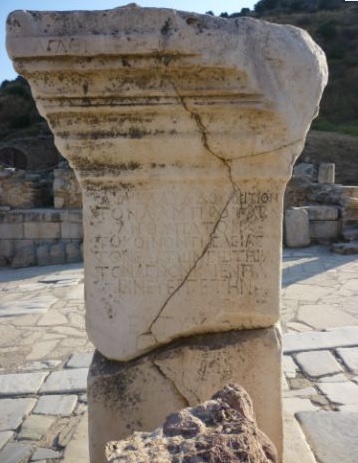
The stage building in Ephesus has two floors. The lower level contains a series of rooms surrounding a corridor; a central door led to the area below the stage and then to the orchestra. The second floor was the back wall of the stage; pierced by the normal three main doors leading to the stage. Here, an inscription about the theater of Ephesus was carved on the threshold of the central door.
The stage facade is re-covered with large blocks that hide the decorative sill that should have served a different function initially. In the inscriptions found here, it was cut directly in front of or slightly above the performers on the stage. The loss of the scene means that they are now extremely difficult to reach and have been badly weathered for the century since they were unearthed. The wall south of the south gate has largely disappeared.
Theater actors from Ephesus that I have been able to find from ancient sources so far;
Ephesus Theater Actors
Gollathios: The most interesting player – estimated to be 7 years old. Comedy, Mime and Acrobat artist – he has graffiti in Ephesus. His own name or his stage name is unknown.
Karmiliainos: Mime (Pantomime) artist who worked in Ephesus and Aphrodisias. There is graffiti in Ephesus. His own name or his stage name is unknown.
Sophronia: Mime and Comedy artist – She has graffiti in Ephesus – Her own name or her stage name is unknown.
Menepmoy: Comedy actor – There is graffiti in Ephesus – His own name or his stage name is unknown.
Alektor: Mime artist from Ephesus and has graffiti in Ephesus. His own name or his stage name is unknown.
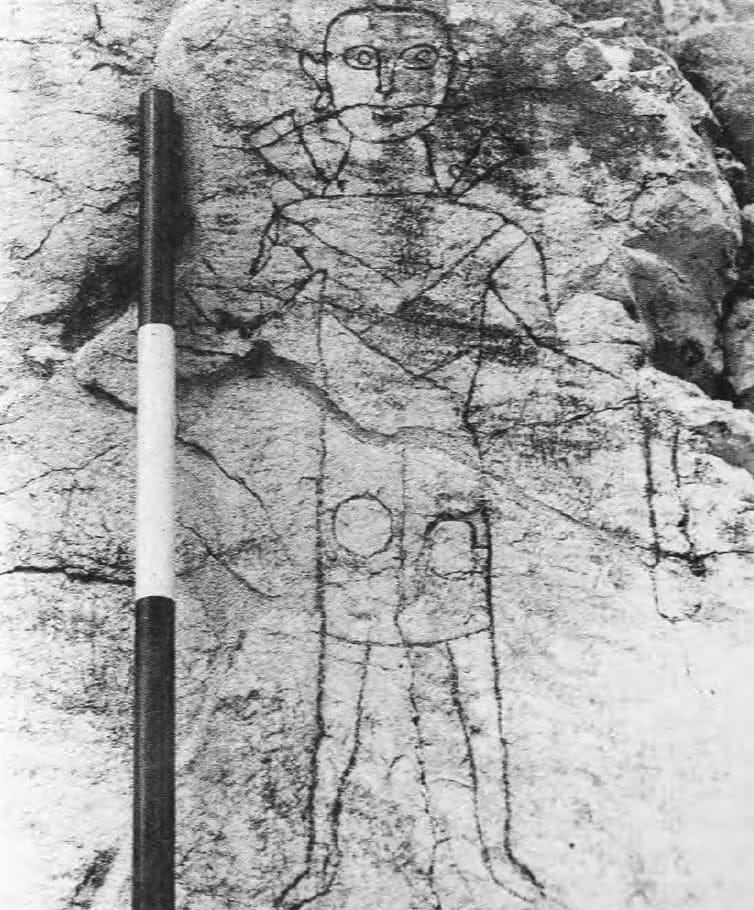
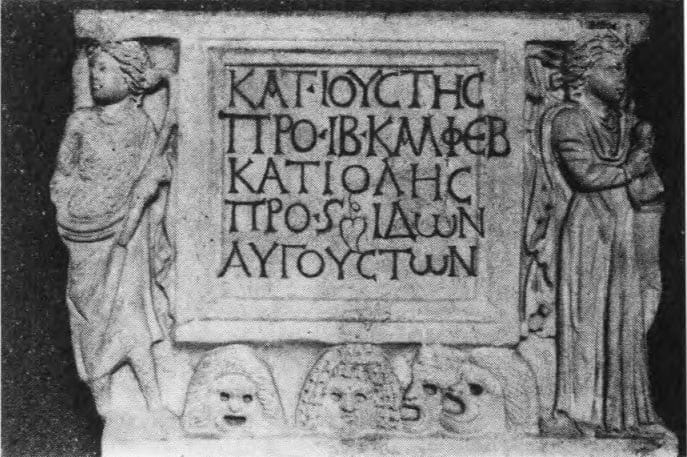

History of the theater:
The word theatron was used in a different sense by ancient writers. It was first used by Herodotus to mean “spectator community”, and later on, other writers used the word “odeon” to mean conference hall, action place, show place and game, taking into account the function of the building.
The source of the theater is BC. At the end of the 7th century, at the beginning of the 6th century, the people of Athens used to organize festivities celebrating Dionysus, the god of wine, during the vintage season as a thanks for the fruitful product he gave.
In these festivities, the people gathered in a round square (Orchestra), danced around the choir singing lyric songs, and made various shows. These festivals and the choir formed the source of the theater.
Every year, the number of participants in the festivities increased, and this round square was not enough for the public. In order for more people to watch the performances, wooden benches (Ikria) were placed on the slope in front of the round square. It was these rows that later formed the sitting style in theaters (Helence / Theatron – Latin Cavea).
B.C. Drama writers emerged in the 6th century. The dramas written by these authors cover certain mythological subjects. In the narratives, the god, the goddess, comes out of a temple, the titans come out of a cave, and the mortals come out of a house.
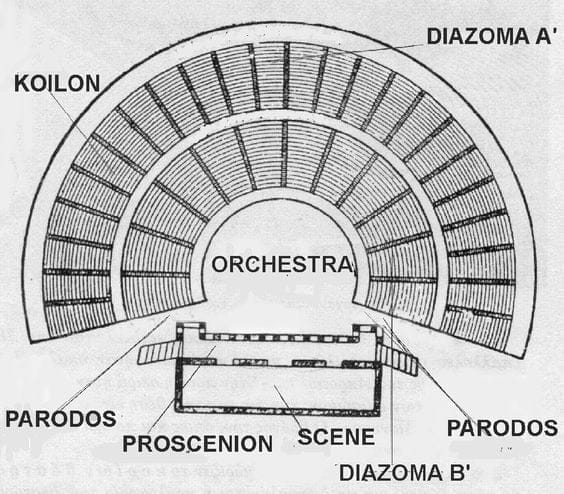
A small house was built next to the orchestra to symbolize the place where the protagonist came from, namely the temple, lair or house. This house was later developed and turned into a scene. The date of formation of the stage in the theater is approximately 460 BC. Some writers thought that the reality of the stage building developed from the altar used as the background in Aischylos‘ plays.
In these festivities held in honor of Dionysus, the god of wine, it was seen that two masked persons appeared and performed in addition to the dancers. In this show, one of the actors represented the people and the other the rulers.
The actor representing the public was asking sarcastic questions about the city giants (police) administration to the person in front of him, and the management player in front of the public actor was giving funny answers to these questions.
Thus, the rulers were both criticized and amused. It was these games that led to the emergence of the first comedies in the world. The first dramatic plays were performed for the first time in BC. 5th century BC in Athens. In Pireus from the 2nd half of the 5th century BC. 4th century BC in Epidauros, Erythrai, Megalopolis, Priene, and Magnesia. At the beginning of the 3rd century BC in Ephesus. At the beginning of the 2nd century, it started to be played in Pergamon.
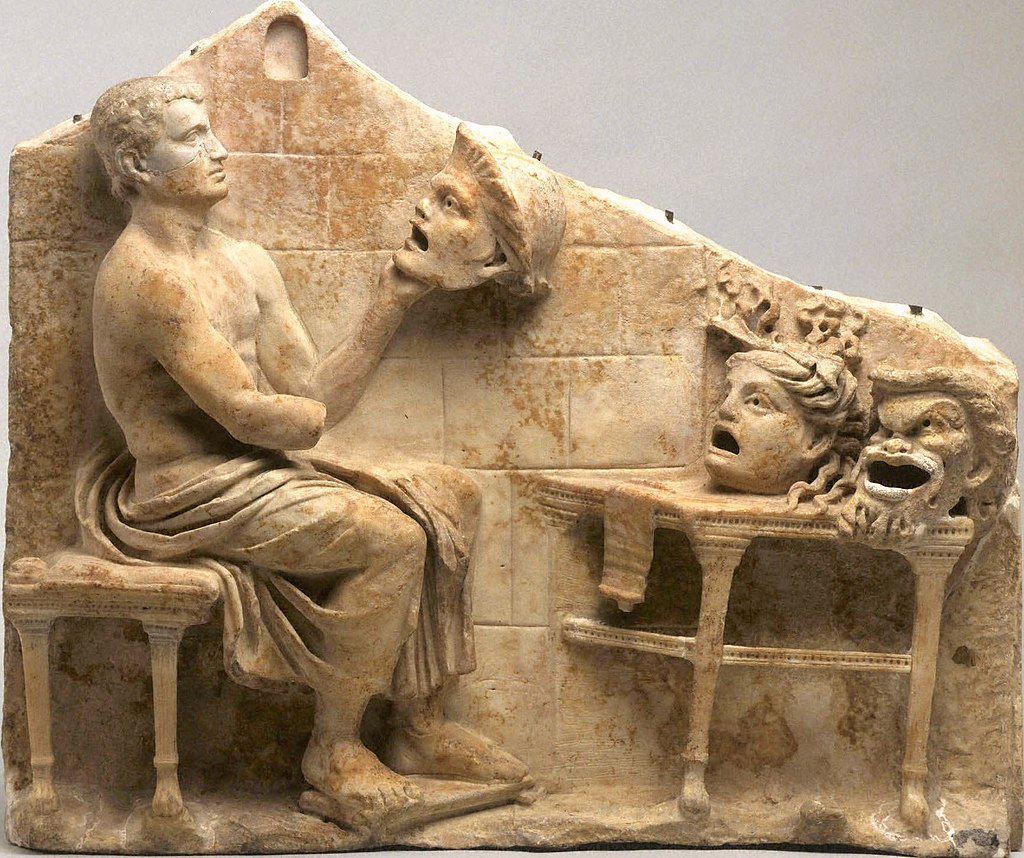
The first games were played in the Orchestra. The word orchestra comes from the Hellenic word for dan place (Orchesis). However, after the stage building was built, the plays were taken to the Proskenion section, located just in front of and adjacent to the stage building, and started to be played there.
The proskenion was built 1.5 meters (narrow) and 2.5 meters (high), as the first games were usually played by two people and the game continued as dialogue.
After the play was taken to the proskenion, the choir, who made the presentation, direction and finale of the play, remained in the orchestra from the beginning to the end of the play.
B.C. The theaters built until the 1st century were generally tried to be built outside the city, and if they were built somewhere in the city, attention was paid to ensure that this place was in an independent location, outside the street texture of the city. Another point to note is that the place where the audience hall will be located has a view and is sheltered from the wind.
With this, the far environment image is also added to the scene image. M.S. In the theaters built in the 2nd and 3rd centuries, the facade of the stage building (Scenefrons) was elevated, combined with the seating (Theatron), the audience was cut off from the world behind the stage.
Local materials were primarily used as materials in the construction of the theater. Stone, travertine, conglomerate, marble are building materials. For example, marble in the theaters of Ephesus, Priene and Miletos, since marble is easily available by sea, local stone in the theater of Termessos, conglemera in the theater of Hierapolis, travertine and Side and Aspendos theaters, granite in the theater of Heraklia, marble in the cities near the quarry, for example, in Aphrodisias.
Marble was used as a building material. Whether it is from marble or other building materials, the examples in Anatolia always date back to the BC. They belong to after the 3rd century, before the theaters were made of wood.
While researchers were continuing their research on theatres, they defined theaters with sitting rows exceeding a semicircle as Hellenic theaters, and theaters with full semicircular seating as Roman theaters. However, this definition is not an accurate one. The biggest difference between Hellenic theaters and Roman theaters is mostly the differences in the stage building.
The main differences in Hellenic and Roman style theaters are as follows;
– The stage of the Hellenic theater has a single floor. The stage building in the Roman style theater has 2-3 floors.
– In the Hellenic theater, the proskenion is narrow and high, and columns carry the proskenion. Plates with pictures (pinakes) were used in the stage building. The background consisting of pictures has been changed according to the content of the game’s subject. The Proskenion in the Roman theater is low and wide. There are no columns carrying the Proskenion.
The columns used in the stage building and the niches between them and the busts placed in the niches have created a facade architecture and the background has always remained constant.
– While the sitting stages and the stage building were separate from each other in the Hellenic theater, they were combined in the Roman theater and an architectural integrity was achieved. This architectural integrity has a great influence on the acoustics in the theatre.
As a result of combining the stage building with the seating areas in the Roman theater, the entrance corridors (Parados) were covered and lodges (Cella Magistratus) were placed on them, and these were allocated to the rulers of the city and the wealthy.
However, in the Hellenic theater, the parados are open. The lodge (Prohedri) where the person who is the manager of the city will sit is usually located in the lower middle of the sitting levels. Orchestra-level seats of honor have been placed around the orchestra for the priests and officials of the city.
The orchestra section of the Hellenic theater is made of compressed earth. In Roman theaters, this section was covered with marble or stone. There are water channels (Euripos) that drain the rain water in the Hellenic theaters. With these channels, the water is discharged from under the stage building. In Roman theaters, there are no such drainage channels, and the rain water is discharged from the gaps (Hyposkenion) under the Proskenion.
The hyposkenions were also used as a cell in which animals were imprisoned in animal struggles during the Roman period, which was found to be beneficial for the acoustics of the theatre. In Hellenic theaters, the seats (Theatron) always rested on the threshold of a hill.
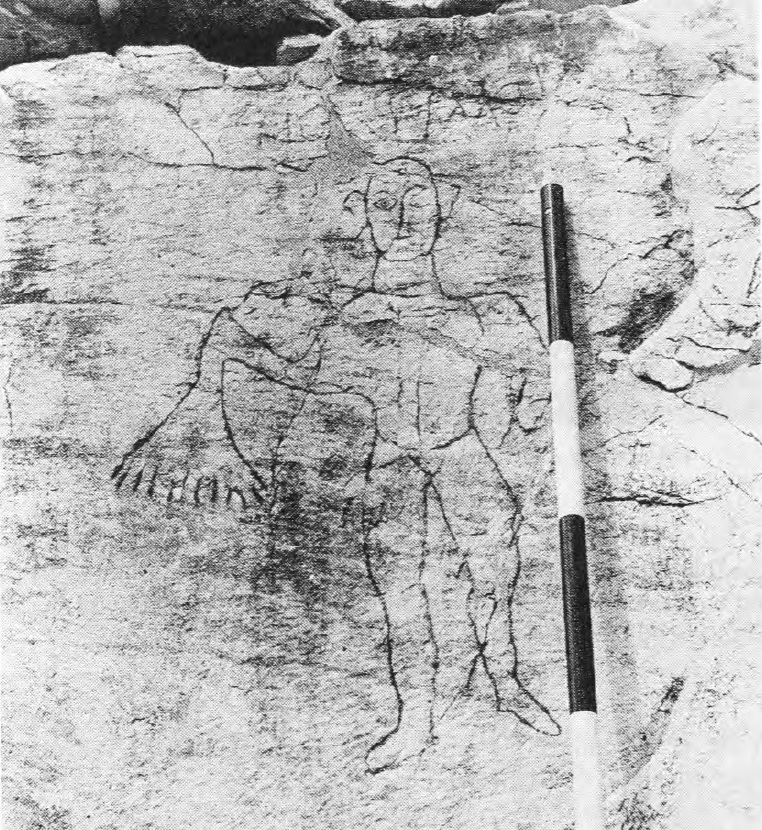
In Roman theaters, on the other hand, if there was a hill in the area where the theater would be made, it was built to lean against the threshold. But even though there were no slopes, they were able to make theater on flat areas because of the knowledge of the arch technique developed by the Romans. We can give the Ancient Side theater as an example.
There were differences between the Hellenic theater and the Roman theater not only in the architectural structure, but also in the content of the plays played.
While literary plays such as tragedy, comedy, mime and music competitions were organized in the Hellenic theaters, gladiatorial fights (Munera) and animal fights (Venationes) were also organized in Roman theaters along with the plays in the Hellenic theaters.
In addition, by making the orchestra area waterproof, the orchestra section was turned into a pool, and different performances were made in these pools by filling it with water.
Actors in Helen’s tragedies BC From the 5th century onwards, they wore colorful, richly ornamented, long-sleeved coats reaching up to the feet, and high-heeled shoes called Kothornus. In comedies, they wore shorts, various knit trousers, and low-heeled shoes (Soccus).
He is known as Aischlos as the inventor of the mask. The women’s masks were painted light and the men’s masks dark. Masks were mostly used to portray tragic and funny characters. In Roman times, tunica and toga were worn and wigs were worn.
Pantomime artists, who played gods, dancers and mythological figures, were on the stage with very thin clothes and a rectangular shawl in their hands. The actress who played the woman in the pantomime shows wore only a wig and strongly painted her face instead of a mask.
Theatrical Plays (Agone)
While explaining the subject of theater in his work called De Architectura (Ten Books on Architecture), Vitrivius says, “After the forum is established, a healthy theater place is chosen for the plays that will take place in the celebration days of the immortal gods.” From these words, it is concluded that not only dramas are played in theaters, but also competitions are held in branches such as oratory, music and poetry.

As a matter of fact, many authors mention that wandering musicians called Rhapsod wandered from city to city and gave concerts in theaters with their kitharas, and some religious festivals were held in theaters.
Some cities, especially big cities such as Ephesus, Athens, Rome, Alexandria, organized many competitions every year and agreed with a professional community that undertook to send a certain number of artists for these competitions. The “Ionia” and “Hellespontus” community is the best example of this.
During my Hellenistic period, games and competitions (Agone) were organized by the Ephesus city council, albeit a small number of private individuals. Competitions were organized not only in the field of athletics, but also in the fields of literature, music, mime and oratory.
In the Roman period, official officials and private individuals competed with each other to organize shows, games and competitions.
For example, the declaration of a city as a capital (metropolis), the minting of a new coin, and the giving of the city the title of Neokoros (the keeper of the imperial temple) were almost an occasion for organizing such competitions. High wages were paid to the artists and dramatists participating in the competitions.
The first gladiator fight in Anatolia took place in Ephesus BC. It was organized in 71. In the city of Ephesus, this struggle continued for at least 2 and at most 12 days.
In the light of this information, the ancient city of Ephesus, which has one of the 7 wonders of the world, namely the Temple of Artemis, was also a very large ancient city that was artistically versatile and gave importance to culture. Within the scope of my research, I will continue to share with you the important or non-significant character that is identified with the ancient city of Ephesus, so that we can all get to know the real Ephesus together.
